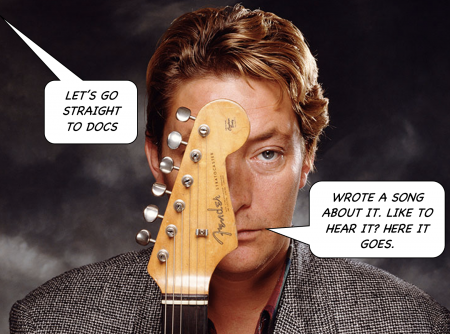Let’s go straight to docs
Something only a private practice lawyer would think to say, usually as a reaction to a perceived lack of time or resources.
|
Negotiation Anatomy™

|
“Oh cripes that time line is hyper-aggressive, and this could all go totally pear-shaped. We don’t have time for a term-sheet; let’s just crack on and go straight to docs.”[1]
Look: if you are doing something easy and homogenous like an NDA, maybe there is some sense in that — though none in engaging a private practice lawyer in the first place, of course. (What are you, mad? Go OneNDA!)
Whenevver engaging external counsel does make sense, dispensing with a termsheet is a charter for utter disaster.
The main commercial points of any arrangement are generally few, easily articulated, and well-suited to clipped adumbration in a table: like a termsheet. They can then haggled over, refined and beaten to a fine copper plate in the abstract, by the principals, quickly and without ceremony. The women and men whose prospects depend on it should trust themselves to arrive at agreed terms without legal help, even if we forensic rentiers quail at the thought. If they do, then by the time professional advisers get a look in, the heat will have dissipated, the principles will be settled, the merchants’ minds will have met and they will just want to get cracking with whatever they have resolved to do.
Each will, therefore, urge its own counsel on with the following words:
“Look, just get on with it, would you? I am not paying you to fiddle around in the weeds here. Make sure the termsheet is adequately reflected, we haven’t missed anything obvious but in any weather be sharp about it. Do not dilly dally.”
This will disappoint most legal eagles — like all performance artists, they like to be the main event — but still it must be the most effective critical path.
Starting, instead, with “docs” cannot be as quick. To be sure, the first cut of a trust indenture may have all those key commercial elements built into it, but may not, and if it does will have them dispersed randomly and cryptically throughout its 90-page heft.
And the modern rechtsadler knows but one way to review a trust indenture: you start at the beginning and work your way through to the end. Should you encounter even a whiff of indemnity, recourse limitation or exclusivity — however ill-judged, or insignificant, or uncalled-for — a foraging aigle juridique will be drawn to it as a moth is to a lamp. She will have to address it. To hell with the main commercial terms: this existential risk must be addressed, and now.
Whereupon, strap yourselves in for six months of torture as this performance grinds on: counsel will get waylaid with every typo, representation and scheduled form of drawdown request notice such that they may never make it to the gritty commercial terms. They may never even find them. Most likely, they will never even know what they are.
A good termsheet is a discipline: a cocktail napkin; the contextualised essence of whatever the turgid entropic mass of final verbiage will, in its perverse and circuitous manner, eventually reflect.
Don’t ever go “straight to docs”.
See also
References
- ↑ Imagine a privately-educated, Oxbridge-graduated north-London accent saying “pear-shaped” and “crack on” if you please.